I have a list of triangles in 3D that form a surface (ie a triangulation). The structure is a deformed triangular lattice. I want to know the change in area of the deformed hexagons of the voronoi tessalation of the lattice with respect to the rest area of the undeformed lattice cells (ie with respect to a regular hexagon). In fact, I really want the sum of the squared change in area of the hexagonal unit cells associated with those triangles.

Background/Math details: I'm approximating a curved elastic sheet by a triangular lattice. One way to tune the poisson ratio (elastic constant) of the sheet is by adding a 'volumetric' strain energy term to the energy. I'm trying to compute a 'volumetric' strain energy of a deformed, elastic, triangular lattice, defined as: U_volumetric = 1/2 T (e_v)^2, where e_v=deltaV/V is determined by the change in area of a voronoi cell with respect to its reference area, which is a known constant.
Want:
Sum[ (DeltaA/ A).^2 ] over all hexagonal cells.
My data is stored in the variables:
xyz = [ x1,y1,z1; x2,y2,z2; etc] %the vertices/particles in 3D
TRI = [ vertex0, vertex1, vertex2; etc] %
where vertex0 is the row of xyz for the particle sitting at vertex 0 of the first triangle.
NeighborList = [ p1n1, p1n2, p1n3, p1n4, p1n5,p1n6 ; p2n1...]
% where p1n1 is particle 1's first nearest neighbor as a row index for xyz. For example, xyz(NL(1,1),:) returns the xyz location of particle 1's first neighbor.
AreaTRI = [ areaTRI1; areaTRI2; etc]
I am writing this in MATLAB.
As of now, I am approximating the amount of area attributed to each vertex as 1/3 of the triangle's area, then summing over the 6 nearest neighbor triangles. But a voronoi cell area will NOT be exactly equal to Sum_(i=0,1,...5) 1/3* areaTRI_i, so this is a bad approximation. See the image in the link above, which I think makes this clearer.